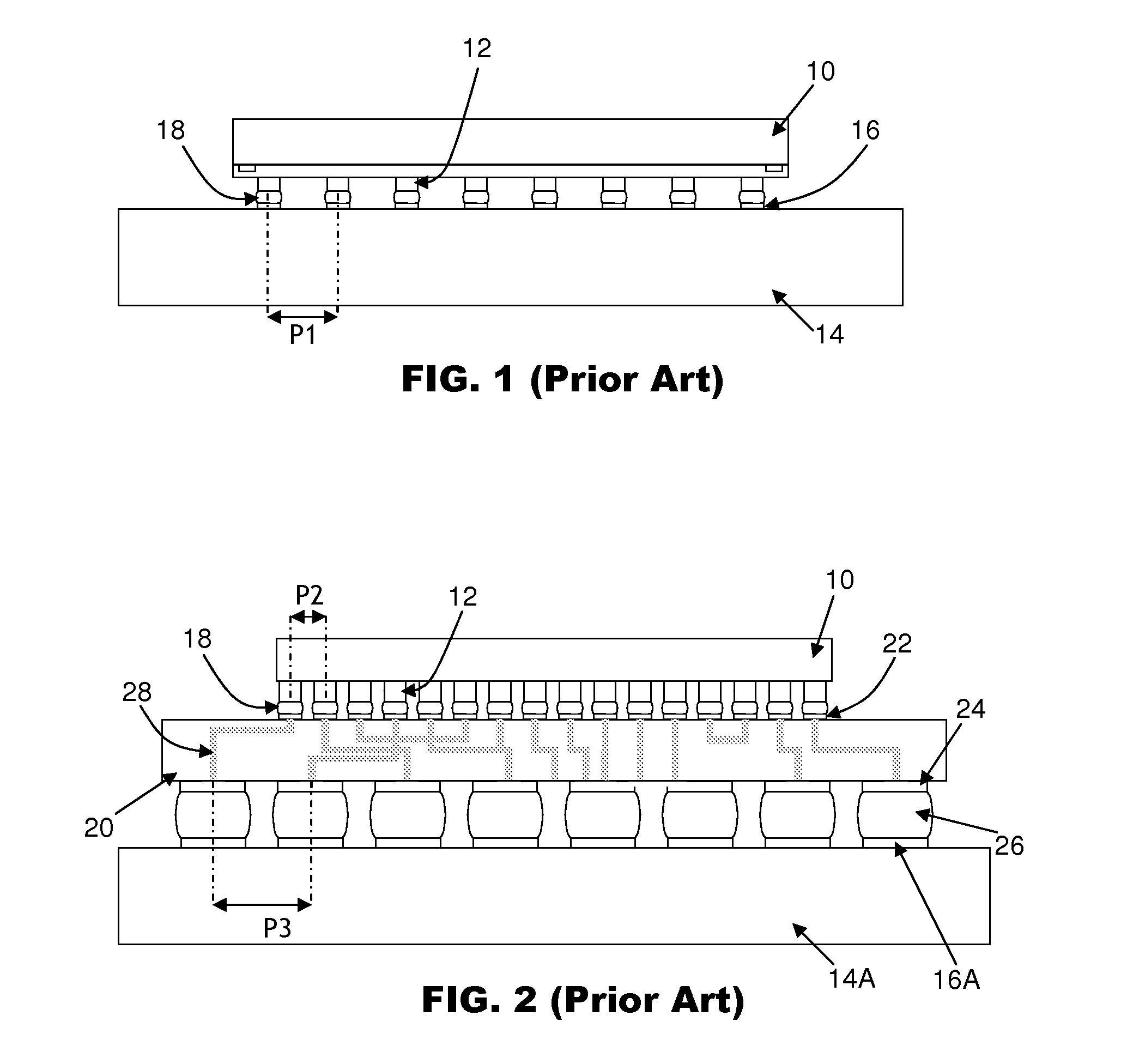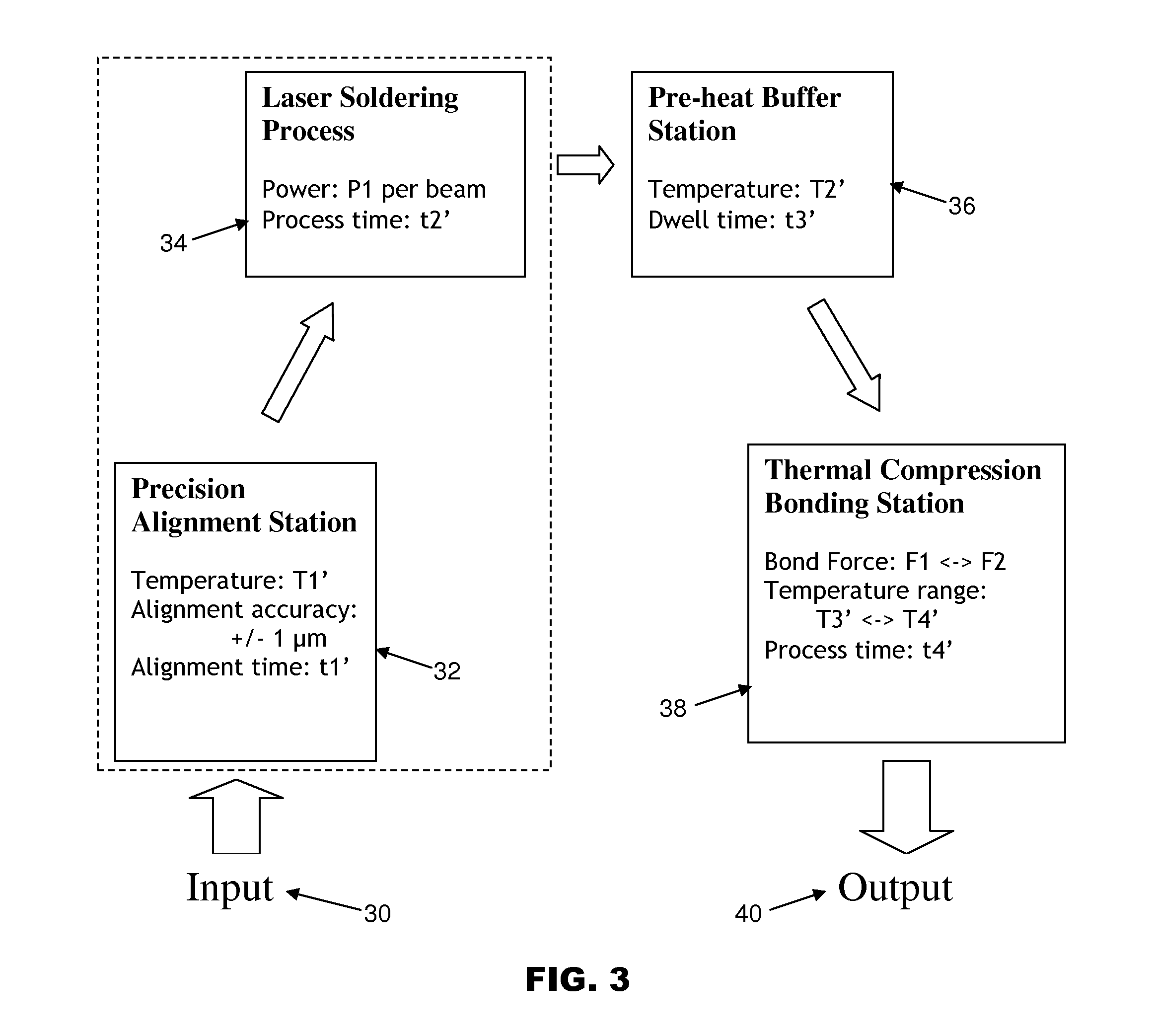Thermal compression bonding of semiconductor chips
a technology of thermal compression bonding and semiconductor chips, applied in the direction of soldering apparatus, manufacturing tools,auxillary welding devices, etc., can solve the problems of introducing new problems in the manufacturing process, unable to accurately and quickly pick-and-place machines, and failure of the bridging solder joint during the reflow process
- Summary
- Abstract
- Description
- Claims
- Application Information
AI Technical Summary
Benefits of technology
Problems solved by technology
Method used
Image
Examples
Embodiment Construction
[0022]FIG. 3 is an overview of the bonding process according to the preferred embodiment of the present invention. The process enables parallel processing of the two major assembly processes, namely the precision alignment process and thermal compression bonding. The thermal compression bonder comprises the precision alignment station 32, the thermal compression bonding station 38 and a buffer station 36. The buffer station 36 is used as buffer for balancing the process flow as well as pre-heating the partially-bonded unit.
[0023]At the precision alignment station 32, both the precision alignment process and the laser soldering process 34 are carried out. All these process stations may reside in different parts of the thermal compression bonder, and a robotic arm may be used to transport the processing flip-chip from one processing station to another. The material flow of the system is described below.
[0024]The substrate 14 is loaded from an input port 30 by an input loader and the f...
PUM
| Property | Measurement | Unit |
|---|---|---|
| diameter | aaaaa | aaaaa |
| wavelength | aaaaa | aaaaa |
| temperature | aaaaa | aaaaa |
Abstract
Description
Claims
Application Information
 Login to View More
Login to View More - R&D
- Intellectual Property
- Life Sciences
- Materials
- Tech Scout
- Unparalleled Data Quality
- Higher Quality Content
- 60% Fewer Hallucinations
Browse by: Latest US Patents, China's latest patents, Technical Efficacy Thesaurus, Application Domain, Technology Topic, Popular Technical Reports.
© 2025 PatSnap. All rights reserved.Legal|Privacy policy|Modern Slavery Act Transparency Statement|Sitemap|About US| Contact US: help@patsnap.com



